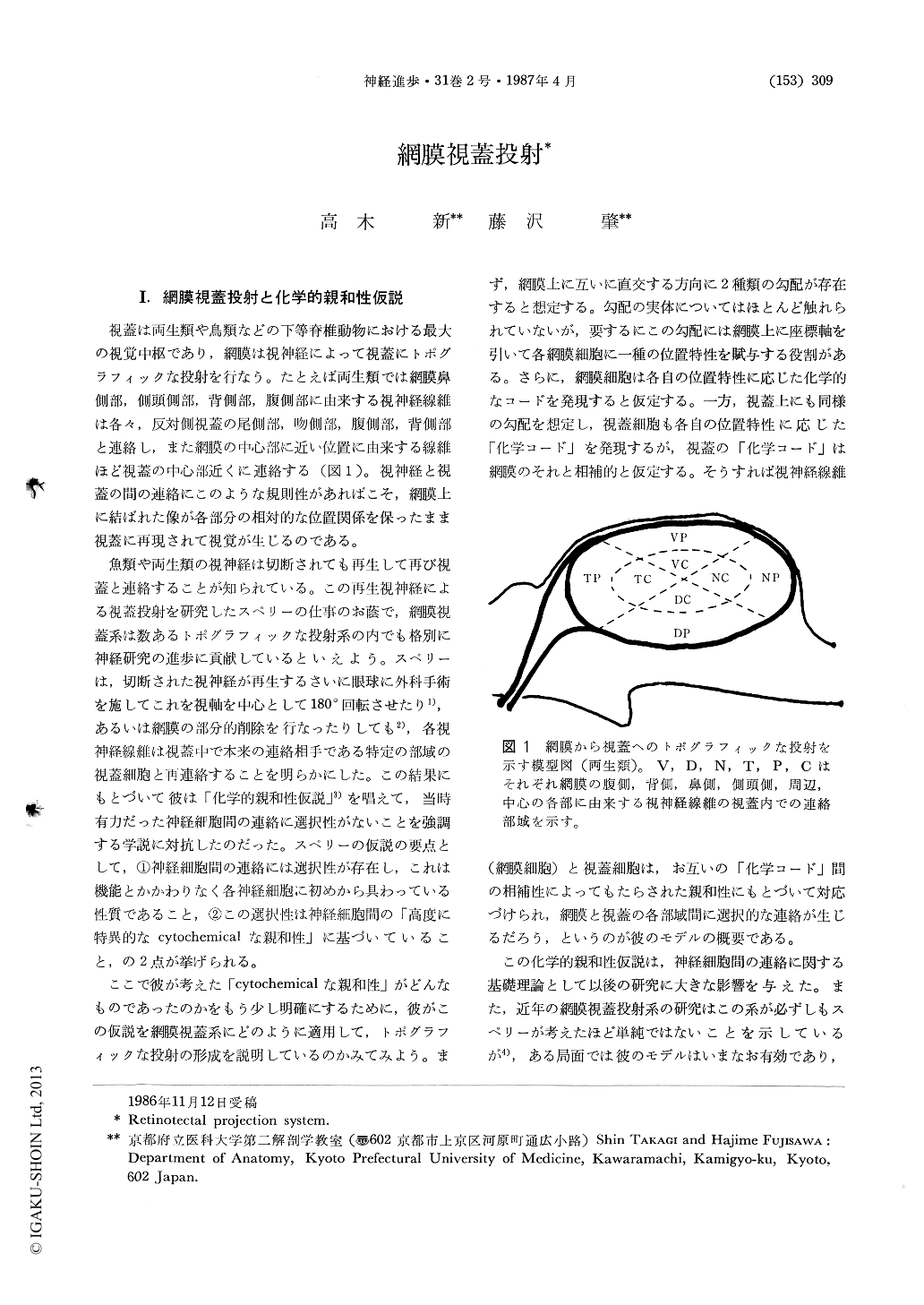Japanese
English
- 有料閲覧
- Abstract 文献概要
- 1ページ目 Look Inside
I.網膜視蓋投射と化学的親和性仮説
視蓋は両生類や鳥類などの下等脊椎動物における最大の視覚中枢であり,網膜は視神経によって視蓋にトポグラフィックな投射を行なう。たとえば両生類では網膜鼻側部,側頭側部,背側部,腹側部に由来する視神経線維は各々,反対側視蓋の尾側部,吻側部,腹側部,背側部と連絡し,また網膜の中心部に近い位置に由来する線維ほど視蓋の中心部近くに連絡する(図1)。視神経と視蓋の間の連絡にこのような規則性があればこそ,網膜上に結ばれた像が各部分の相対的な位置関係を保ったまま視蓋に再現されて視覚が生じるのである。
魚類や両生類の視神経は切断されても再生して再び視蓋と連絡することが知られている。この再生視神経による視蓋投射を研究したスペリーの仕事のお蔭で,網膜視蓋系は数あるトポグラフィックな投射系の内でも格別に神経研究の進歩に貢献しているといえよう。スペリーは,切断された視神経が再生するさいに眼球に外科手術を施してこれを視軸を中心として180°回転させたり1),あるいは網膜の部分的削除を行なったりしても2),各視神経線維は視蓋中で本来の連絡相手である特定の部域の視蓋細胞と再連絡することを明らかにした。この結果にもとづいて彼は「化学的親和性仮説」3)を唱えて,当時有力だった神経細胞間の連絡に選択性がないことを強調する学説に対抗したのだった。
How neurons recognize and connect to their appropriate targets is a very important biological problem. In this connection, the retino-tectal system of the lower vertebrates has been one of the most extensively studied systems. Sperry revealed the existence of the specificity when the regenerating optic nerve fibers make connection to the tectal neurons, and proposed the famous chemoaffinity theory.
Recently developed immunological techniques including the production of the monoclonal anti-bodies (MAbs) enables us to examine directly the existence of the cell surface labels that the chemoaffinity theory assumed to explain the for-mation of the specific neuronal connections. We immunized the mice with the optic tectum of the Xenopus laevis and obtained a MAb (MAb A5) that bound selectively to the optic nerve termination sites in the visual centers. The spatial as well as temporal pattern of the ex-pression of the MAb A5 antigen suggested that this molecules might be involved in the target recognition of the optic nerve fibers. Meanwhile, the attempts to alter the topogra-phically ordered pattern of this projection system by using antibodies against N-CAM were reported recently. Several interesting antigens that might be involved in the formation of retino-tectal pro-jection were also reported. These works are briefly reviewed in this article.

Copyright © 1987, Igaku-Shoin Ltd. All rights reserved.


